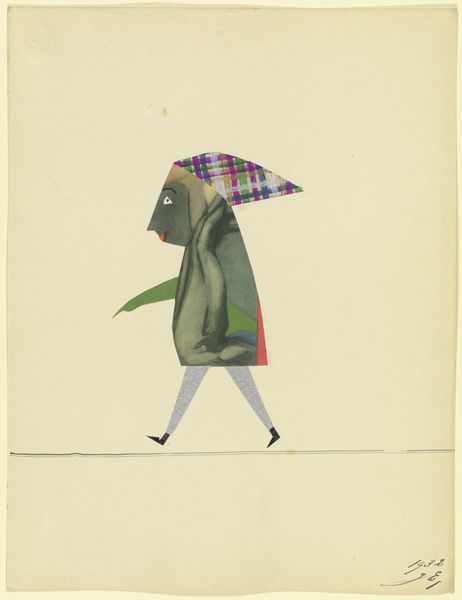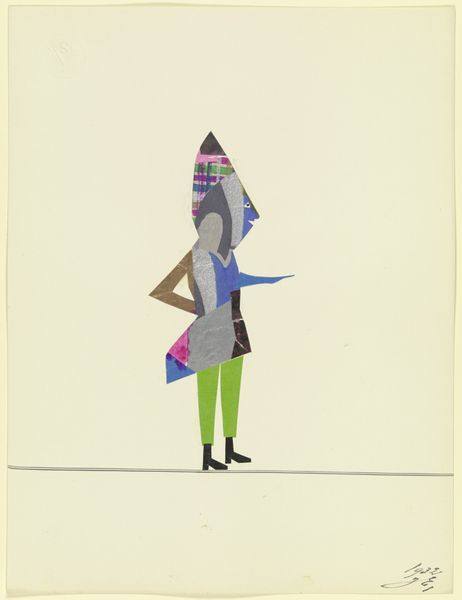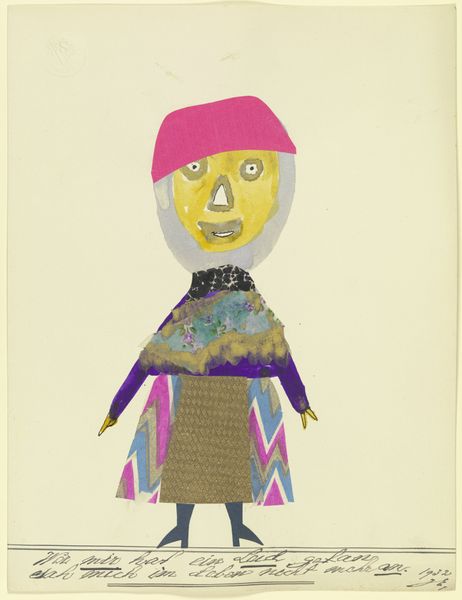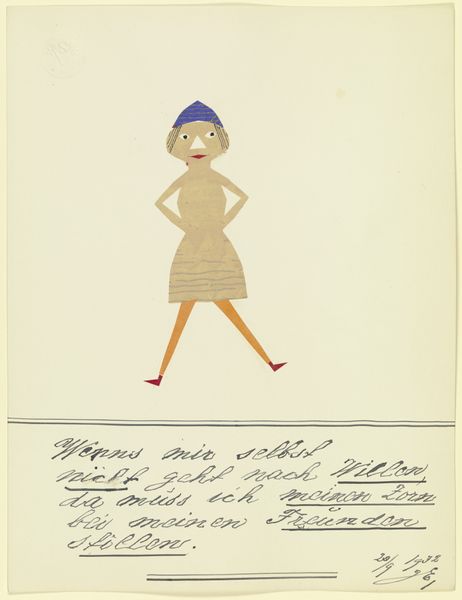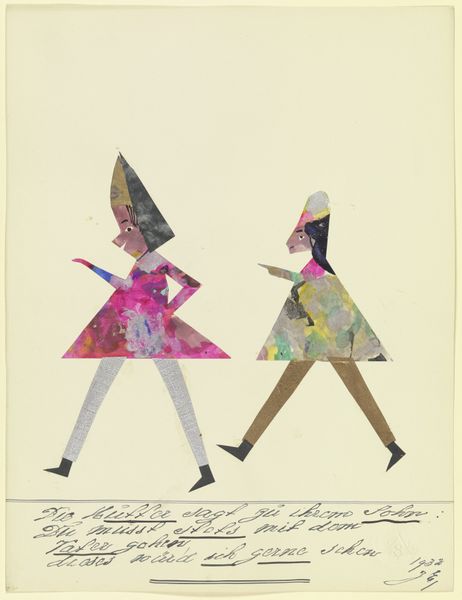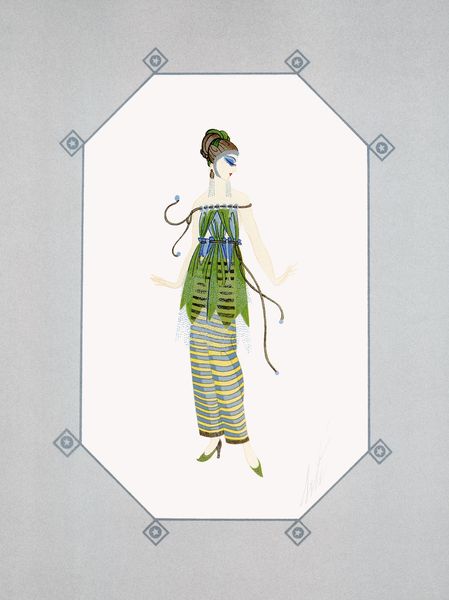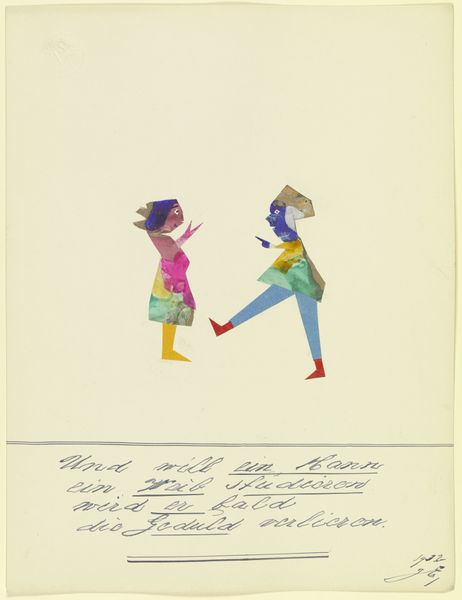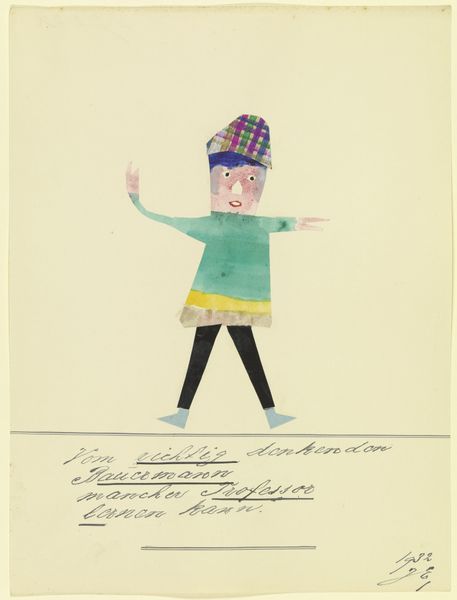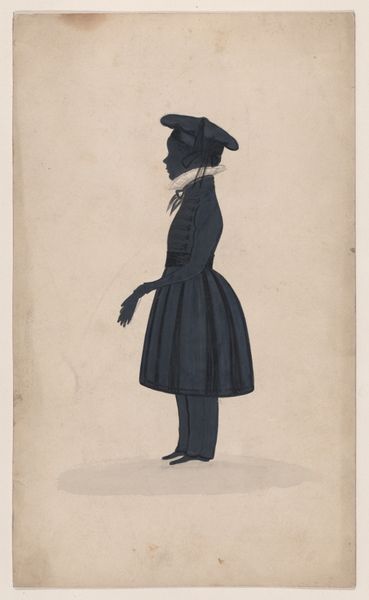
drawing, collage, gouache, paper, watercolor, ink
#
drawing
#
collage
#
gouache
#
figuration
#
paper
#
watercolor
#
ink
#
geometric
#
line
#
watercolour illustration
#
modernism
Copyright: Public Domain
Curator: What a striking piece. This is “17940,” a 1932 drawing and collage by John Elsas, rendered in gouache, watercolor, and ink on paper. It’s currently held here at the Städel Museum. Editor: My first impression is of a figure both playful and oddly detached. The simplified shapes and flat perspective create a sense of a dream, or maybe even a slightly unsettling fairy tale. Curator: I’m particularly drawn to the artist’s masterful manipulation of line. The crisp edges of the geometric forms juxtapose so interestingly with the softer gradations of color, creating a vibrant tension across the picture plane. Note the economical use of pigment, each color clearly distinct. Editor: And consider that peculiar hat, a tall cone perched atop her head. Doesn't it remind you of dunce caps or perhaps a medieval wizard? It gives her an almost theatrical air, as if she’s stepped out of some half-remembered story. It projects authority but, because it is askew, seems naive, maybe even stupid. Curator: Precisely. It’s these seemingly disparate elements—geometric abstraction mingling with figuration, line mediating color—that construct a powerful semiotic interplay, yielding potential through diverse readings. Editor: I find her posture fascinating too. Her arm is extended, but to what end? Is she giving directions, casting a spell, or simply pointing at something we can't see? I think the ambiguity forces us to project our own narratives onto the scene. The way the ground seems to stretch into nothing only compounds this uncertainty. Curator: The flatness in spatial rendering challenges any illusion of depth. It reinforces a two-dimensionality that highlights the material properties of the picture itself as constructed. Editor: Perhaps. I see a universal figure, a sort of Everywoman who encapsulates different possibilities. Her enigmatic gesture might represent hope, accusation, or, perhaps, simply bewilderment at the world. I see echoes of folk tales, dreams, cultural history, even psychology, here. Curator: I concede that the iconography has strong emotive qualities that pull on familiar symbolic threads, all within the structure of a tightly conceived image. Editor: In a way, that interplay creates its peculiar strength, offering up different viewpoints and meanings we can take from the whole. Curator: Yes. Ultimately, I am enthralled by how Elsas used a deceptively simplified aesthetic to create such resonance.
Comments
No comments
Be the first to comment and join the conversation on the ultimate creative platform.
